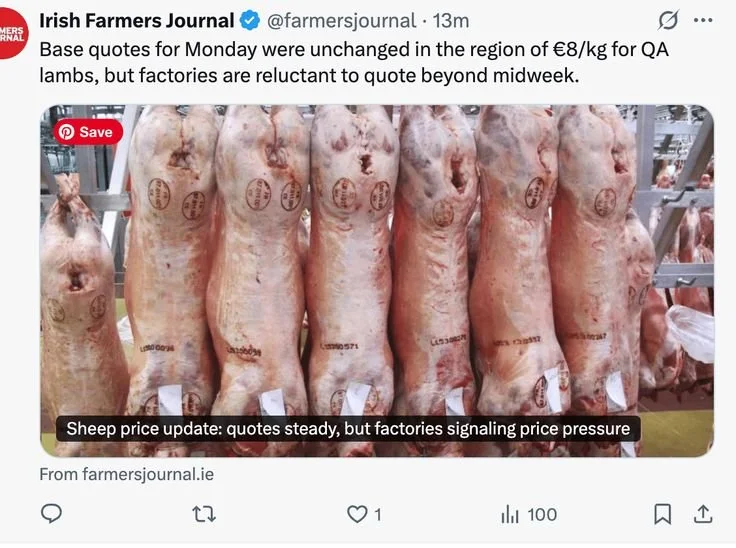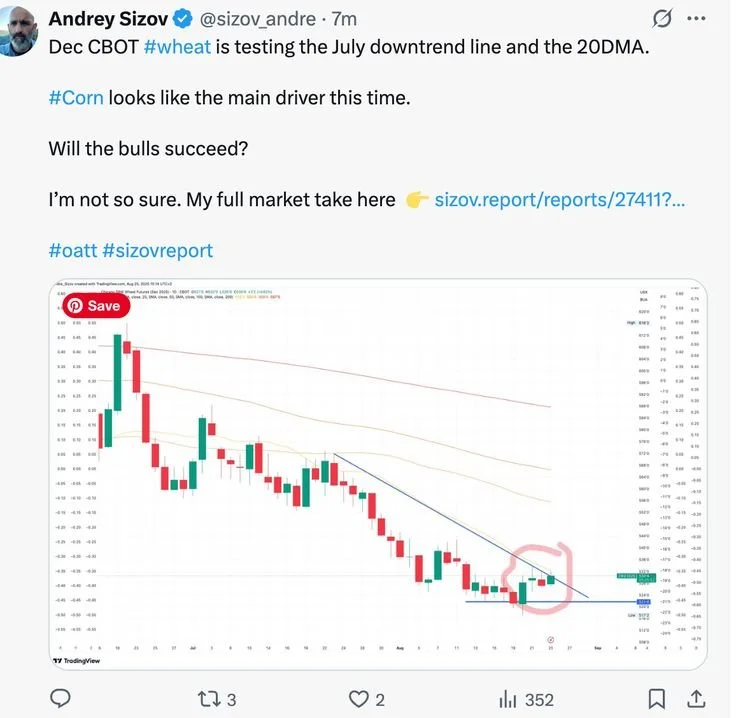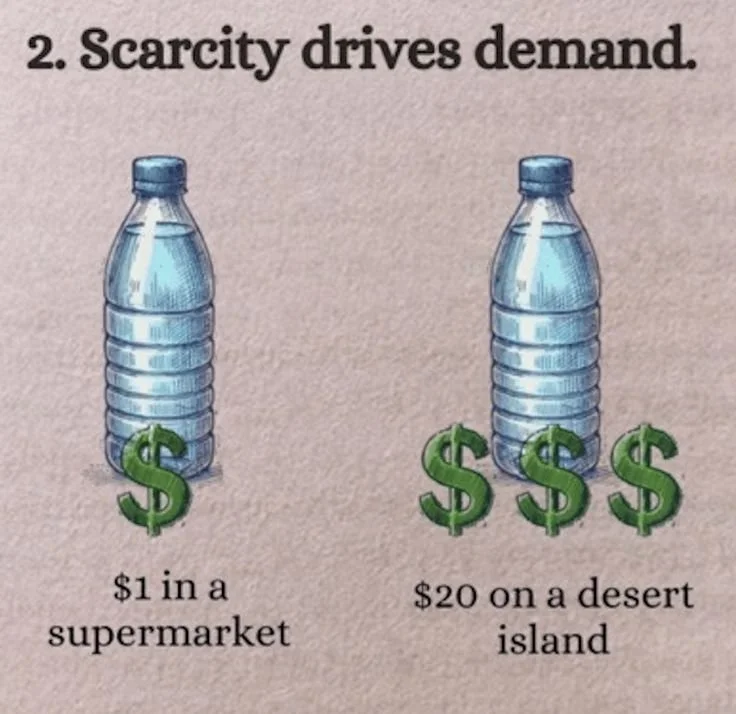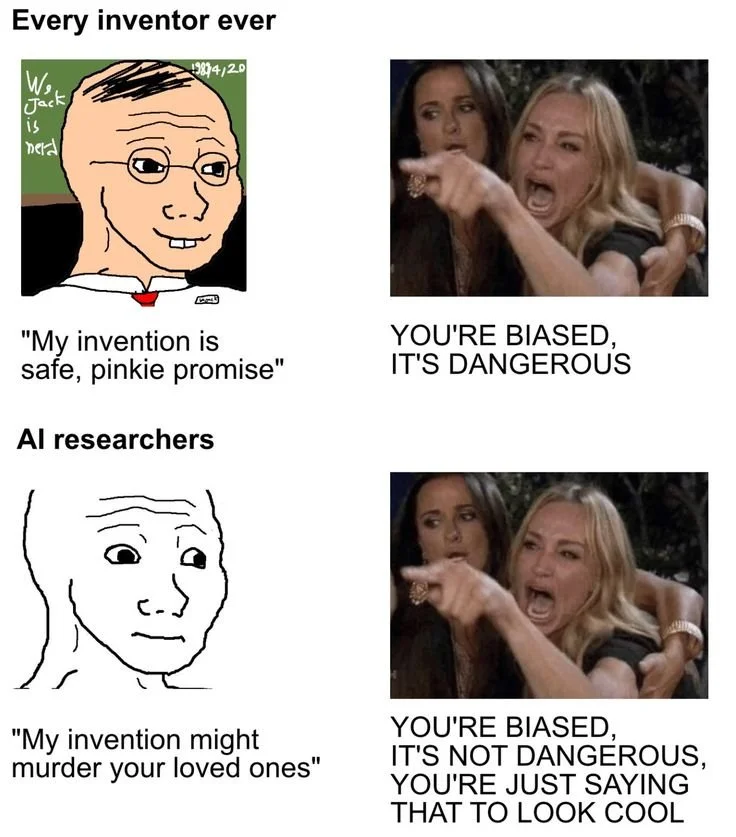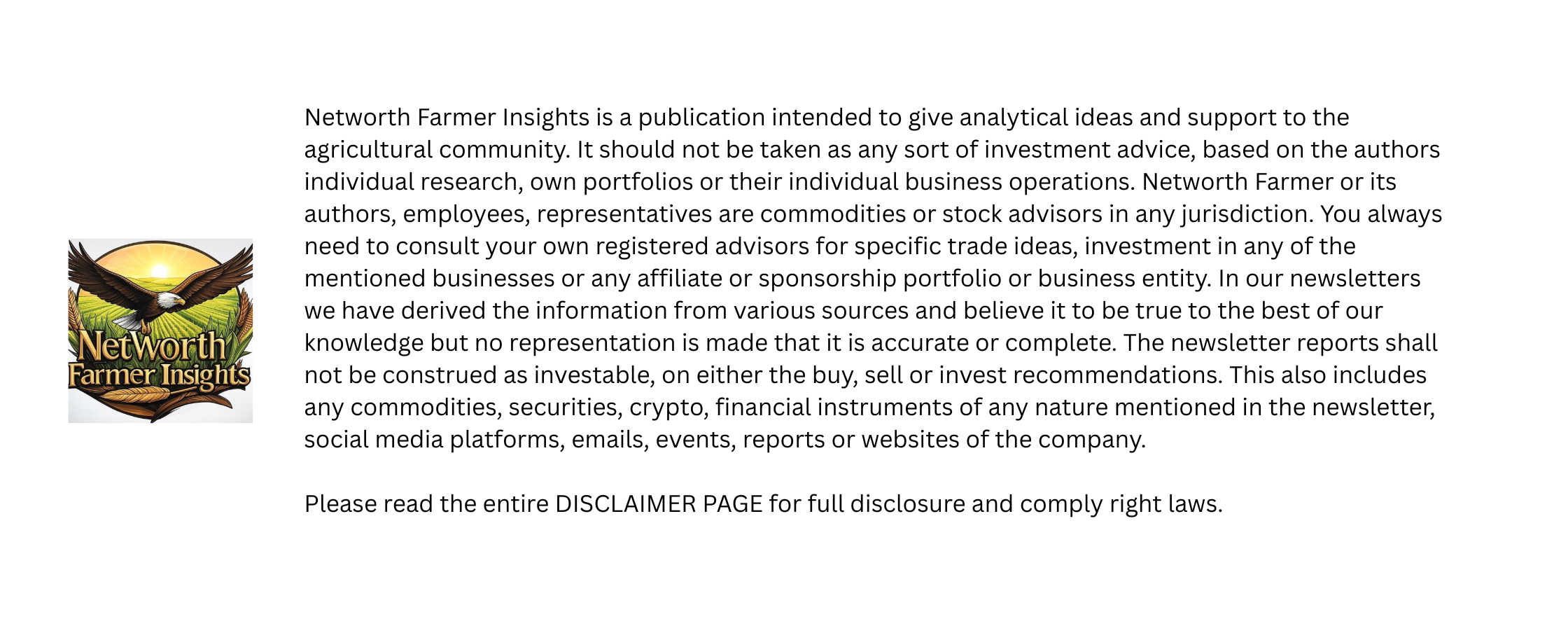Back to Basics
“The farmer is the only man in our economy who buys everything at retail, sells everything at wholesale, and pays the freight both ways.”
🚜 New in AgTech
Chatting Up the Crops
Agronomists and farmers are forging stronger bonds in today's dynamic agricultural scene, thanks to advancements in technology. Bushel, a software business for agriculture, is leading the charge in this digital transformation by using AI to cultivate these relationships using a conversational bot called Buddy. By streamlining agricultural procedures, increasing collaboration, and providing timely, actionable information, this AI helper hopes to empower agronomists and farmers equally.
The Bushel's Buddy chatbot was first shown at the June Buddy Seat Conference. The company is currently in alpha testing and plans to make it available to more people later this year. Buddy is a tool that agronomists can use to easily ask natural language enquiries about their customers. It is available through Bushel's customer relationship management (CRM) site. For instance, questions like "Which customers have past due invoices?" or "How much grain did this farmer contract last year?" are answered right away using data from both the CRM and the transactions. Built on large-language model (LLM) APIs, Buddy is enhanced with specialised math functions to handle calculations that typical LLMs struggle with, ensuring precise numeric answers.
Empowering Farmers
Buddy has a lot of potential that goes beyond just agronomists. Bushel is looking into ways to give farmers direct access to the chatbot via customer portals. This would allow growers to easily check their data, like contracts, invoices, and crop performance, on their own. This makes agricultural intelligence accessible to everyone, helping farmers make smarter decisions almost instantly.
Buddy is part of Bushel’s larger digital ecosystem that helps simplify the complicated parts of the agricultural supply chain. Their platform makes it easy to go digital with all those paper-heavy tasks, like signing grain contracts electronically, handling payments, and managing financial workflows. Bushel has rolled out a digital wallet that lets farmers set up FDIC-backed business banking accounts. This makes managing finances easier and helps create more transparency between farmers and agribusinesses.
AI’s Growing Influence in Agriculture
Bushel’s chatbot is a great example of the exciting wave of AI innovations that are changing the farming landscape around the world. South African virtual agronomists are offering localised crop advice, while regenerative agriculture chatbots are sharing biology-based guidance. It's pretty cool how AI tools are boosting both productivity and sustainability!
FarmingFirst shows us how AI-driven crop monitoring, smart nutrient management, and automated equipment are boosting yields and helping to save resources at the same time. Companies such as Advancing Eco Agriculture have introduced chatbots that draw on years of experience in regenerative farming, helping growers with practical, science-based advice. It looks like the rise in AI use is right on track with predictions that the global AI agriculture sector is set to almost triple by 2028.
Where it Matters
So, when it comes to academics, the blend of AI in agriculture really opens up some exciting research avenues. You’ve got agronomy, computer science, economics, and sustainability all coming together. Pretty cool, right? Looking into how AI changes advisory roles and connects with farmers can really help us design better technology and promote fair agricultural growth.
Investors can really take advantage of innovations like Buddy by Bushel. These solutions are all about finding new efficiencies in agricultural supply chains and improving customer management. These technologies help cut down on administrative hassles and boost data-driven insights, making it easier to build scalable business models that have great growth potential and a positive social impact.
The future of farming really hinges on closing those knowledge gaps, using technology that works for both agronomists and farmers. It’s a great idea for everyone in agriculture to get on board with AI-driven solutions like Buddy. They can really help improve how things run, make better decisions, and build stronger connections all along the supply chain.
Agribusinesses should really think about using AI-powered CRM tools. They can help you get real-time insights about your customers and enhance your service. Farmers might want to check out AI-enabled platforms. They can really help in taking charge of their data and boosting both financial and crop results. At the same time, it’s important for researchers and policymakers to back innovation that promotes accessibility and sustainability.
-
A farmer has twenty sheep, ten pigs, and ten cows. If we call the pigs cows, how many cows will he have?
A Field Full of Folly
There’s a new hired hand on the farm. It doesn’t complain about the radio station, never shows up late smelling of last night’s bonfire, and it absolutely will not stop to pet the border collie. This employee is John Deere’s autonomous RX9 tractor, a magnificent, driverless behemoth that’s currently stirring up more drama than a county fair pie-eating contest. An article from Future farming poses the question: “Is John Deere making a monumental mistake betting the farm on this autonomous vision?” And as I read it, I couldn’t help but picture Old MacDonald’s great-great-grandson, Mac, staring at his new RX9 with a mixture of awe and utter terror.
The Seduction of the Shiny Thing
Imagine Mac. He’s a savvy operator. He embraced auto-steer, he’s a wizard with his yield maps, and his drone collection is the envy of the district. The RX9 arrives not with a rumble, but with a soft, futuristic hum. It’s beautiful. It’s all sensors, cameras, and promises of 24/7 productivity.
Mac, feeling like a character in a sci-fi movie, programs his first job. The RX9 rolls out, perfect, unwavering. Mac, for the first time in his life, finds himself with spare time. He sips coffee. He contemplates the metaphysical nature of soil carbon. It’s glorious. This is the AgTech dream: efficiency! optimisation!
The Ghost in the Machine (or the Glitch in the GPS)
But then, it happens.
The RX9, in the far forty, encounters a phenomenon no algorithm could predict: a pheasant with a death wish and the erratic flight pattern of a poorly thrown paper airplane. The machine stops. It’s confused. It sends Mac an alert: “Obstacle detected. Intervention required.” Mac, who was midway through a nap, sprints across the field like a possessed man. He arrives, out of breath, to shoo away a bird that has already lost interest. The lesson? Technology is brilliant, but nature is gloriously, chaotically unpredictable. You can’t code for poultry-based anarchy.
This argument is the core of the debate. John Deere is betting on a fully autonomous future, a “go big or go home” strategy. The critics whisper: But what about the semi-autonomous middle ground? What about advanced driver-assist systems that still keep a human in the loop, like a super-powered co-pilot?
The Lesson from the Furrow
Here’s the thing. John Deere might not be wrong; they might just be early. They’re playing the long game, building the infrastructure for a world where every machine speaks the same digital language. They are the bold pioneer planting a new crop everyone is sceptical of.
The lesson isn’t to avoid autonomy. The lesson is to build technology that serves people, not replaces them. The most successful tech will be the kind that makes Mac’s life easier today, not just in some distant, fully automated tomorrow. A system that helps him steer straighter while he’s in the cab? Brilliant. A monitor that predicts a mechanical failure before it happens? Game-changing. These are the "semi-autonomous" stepping stones that build trust and prove value without making the operator feel like a redundant accessory.
John Deere’s RX9 is a breathtaking moonshot. It’s a statement of intent. But for most farmers, the real revolution isn’t about removing the driver. It’s about giving them a better, smarter, more capable partner in the cab.
So, is it a mistake? Check back in a decade. In the meantime, the rest of us should focus on solving the problems right in front of us, even if that problem is a particularly stubborn pheasant. The future of farming involves more than just machines working independently. It’s about the perfect, hilarious, and endlessly complex partnership between the farmer, his tech, and the wonderfully unpredictable world he tends. Want more takes on the tech that’s truly changing the field? Don’t be a stranger. Come on back now.
📢 Tweet of The Week
🌍 Fields & Frontiers
France’s Law That Tried to Sting Itself: The recent issue over France's Duplomb Law underscores a significant dichotomy between environmental conservation and agricultural requirements. The legislation sought to revoke the prohibition on the neonicotinoid insecticide acetamiprid, which has been banned since 2018 due to its detrimental effects on bees and biodiversity, enabling farmers to enhance their competitiveness with their European counterparts. The Constitutional Council annulled the law's most controversial provisions, despite significant resistance from environmental organisations and a public petition supported by over two million individuals, thus upholding the right to a healthy environment. This decision incited irritation among farmers who perceive neglect and worry dependence on imports that may not conform to national norms. The main takeaway for European AgTech is the need for more awareness and support for bioinsecticide options that safeguard both farming success and biodiversity. Advancing breakthroughs in sustainable pest management can reconcile environmental stewardship with agricultural efficiency. For more information, go to Le Monde.
Stablecoin Yields Threaten Traditional Bank Deposits: A new report warns that high yields on stablecoins could cause a massive outflow of deposits from traditional banks, echoing the financial shifts of the 1980s. This dynamic may increase funding costs and raise credit prices, impacting the broader financial ecosystem. The current regulatory landscape has sparked intense debate between US banks and the crypto industry, highlighting a pivotal moment for stablecoin innovation. As the US government looks to stablecoins to bolster the dollar's global dominance, the stakes for crypto investors have never been higher. Stay informed, stay strategic, and explore this critical development to safeguard and grow your investments now. Read more on Coin Telegraph.
Dust Storms, Traffic Nightmares, and Playa Mayhem: Burning Man 2025 kicked off with a literal bang—or rather, a massive dust storm that turned the festival into a desert tornado simulator. Tents flew, campsites were scattered like confetti, and attendees got an unexpected full-body exfoliation courtesy of Mother Nature’s grit. Traffic jams stretched for hours because, apparently, even your car doesn’t want to go through a 50 mph dust blast. With rain and thunderstorms still in the forecast, runners better brace for more mud fights than dance parties. Want the full chaotic scoop that’s dirtier than the dust? Check out the wild details:
UK Bioethanol Industry In Crisis: London, The UK’s domestic bioethanol industry, is facing a tough situation as a second major producer has indicated it might have to shut down, pointing to an uneven playing field due to recent government trade concessions. This situation brings up some serious worries about the country’s fuel security and whether it can hit those renewable energy goals. The situation arises from the UK's choice to allow concessions for bioethanol imports, especially from the United States. A report from S&P Global Commodity Insights says that local producers are struggling to keep up with subsidised US imports of sustainable aviation fuels (SAF) and renewable diesel, which have bioethanol as a major ingredient. People in the industry are saying that the arrival of cheaper products from the US makes it tough for local production to stay afloat, which could threaten hundreds of jobs and important national infrastructure. If a second plant closes, it would mean that the UK bioethanol production would be funnelled into just one facility. S&P Global explores the dangers ahead.
Types of Digital Currencies: Digital currencies exist in various forms and sizes, each contributing uniquely to the economy. So, cryptocurrencies such as Bitcoin run on decentralised blockchains, which means they provide transparency and security without needing a central authority to oversee them. Stablecoins are linked to traditional assets like the Euro to keep things steady, which makes them really useful for everyday transactions. Central Bank Digital Currencies, or CBDCs, are basically digital money that the government supports. They strive to combine the convenience of digital payments with regulatory oversight. Getting a grip on these types really helps AgTech businesses pick the best tools for trading, financing, and payments in today’s digital economy. If you want to learn more about different types of digital currencies, check out Investopedia.
To AI or Not to AI: The growing skepticism around AI, highlighted by the recent market loss of $1 trillion amid fears of an AI bubble, signals a moment of caution for Agtech investors in Europe. Despite AI's transformative promise, many corporate AI pilots are failing, underscoring the gap between hype and practical results. This signals a need for agri-technology businesses to carefully evaluate AI adoption rather than follow hype, focusing on proven solutions that deliver tangible benefits. The shift from boundless optimism to realistic expectations means European Agtech players must prioritize sustainable, efficient AI integration aligned with their unique agricultural challenges. Ultimately, this cautionary trend invites a strategic, measured approach to AI in agriculture, emphasizing innovation with clear value and risk management. AI Invest has further explored the growing skepticism.
Love You Mile: When “Achy Breaky Heart” was released, it wasn’t just another country single—it became a cultural phenomenon. Topping charts across genres, earning triple-platinum status in Australia, and sparking a global line-dance craze, it vaulted Billy Ray into the spotlight almost overnight. Though some critics later labeled it a one-hit marvel, its impact was undeniable and remains legendary. Billy Ray Cyrus celebrated his 64th birthday this week. He might have started as a so-called one-hit wonder—but over three decades later, he’s proven his staying power in the music industry and beyond. He returned to the top in 2019 as a featured artist on Lil Nas X's “Old Town Road” remix, which dominated the Billboard Hot 100 for a record-breaking 19 weeks—and earned Cyrus his first two Grammy Awards. People covers how his daughter Miley Cyrus artistically celebrated him.
-
Ten cows. We can call the pigs cows, but it doesn’t make them cows.



